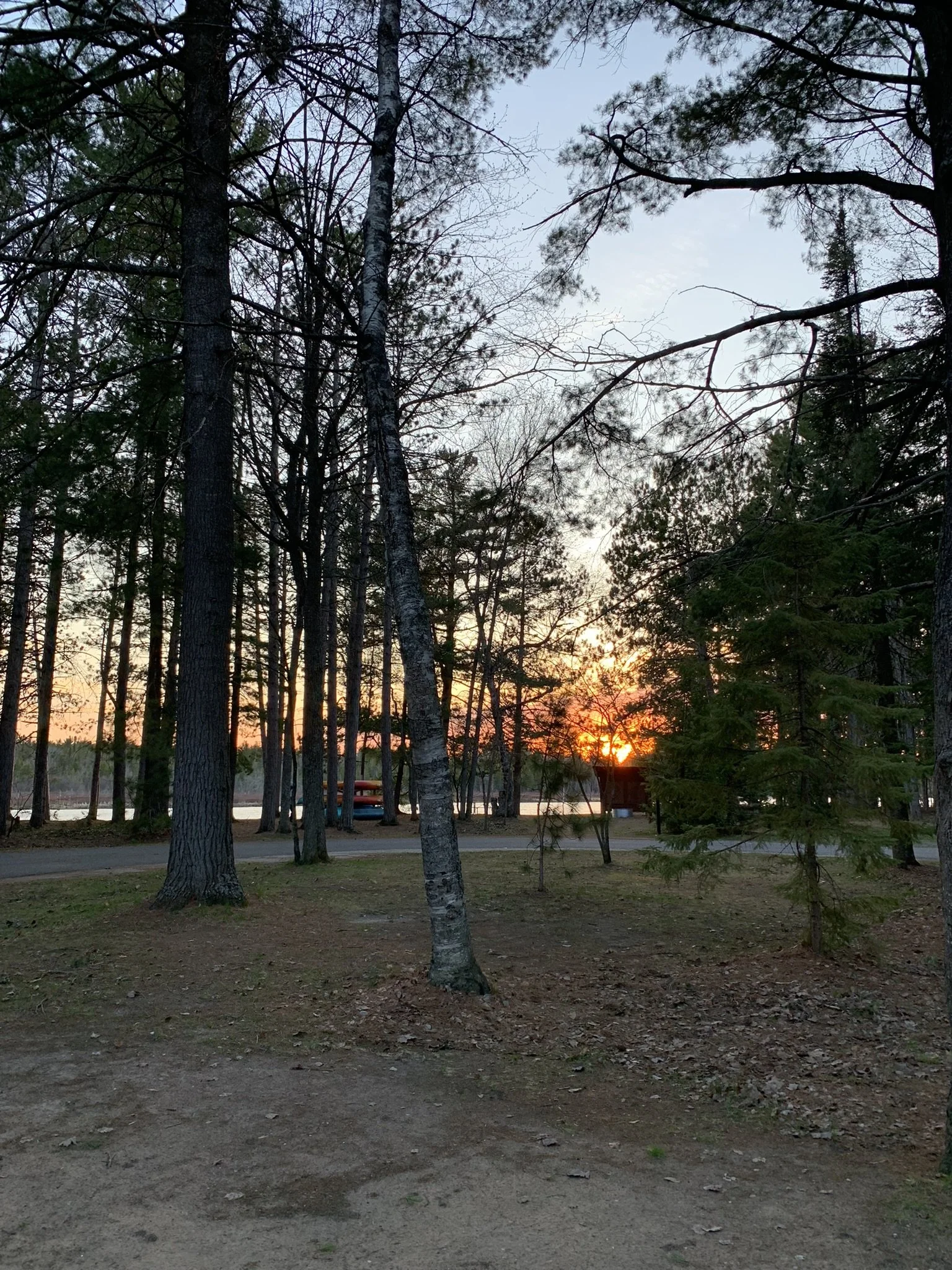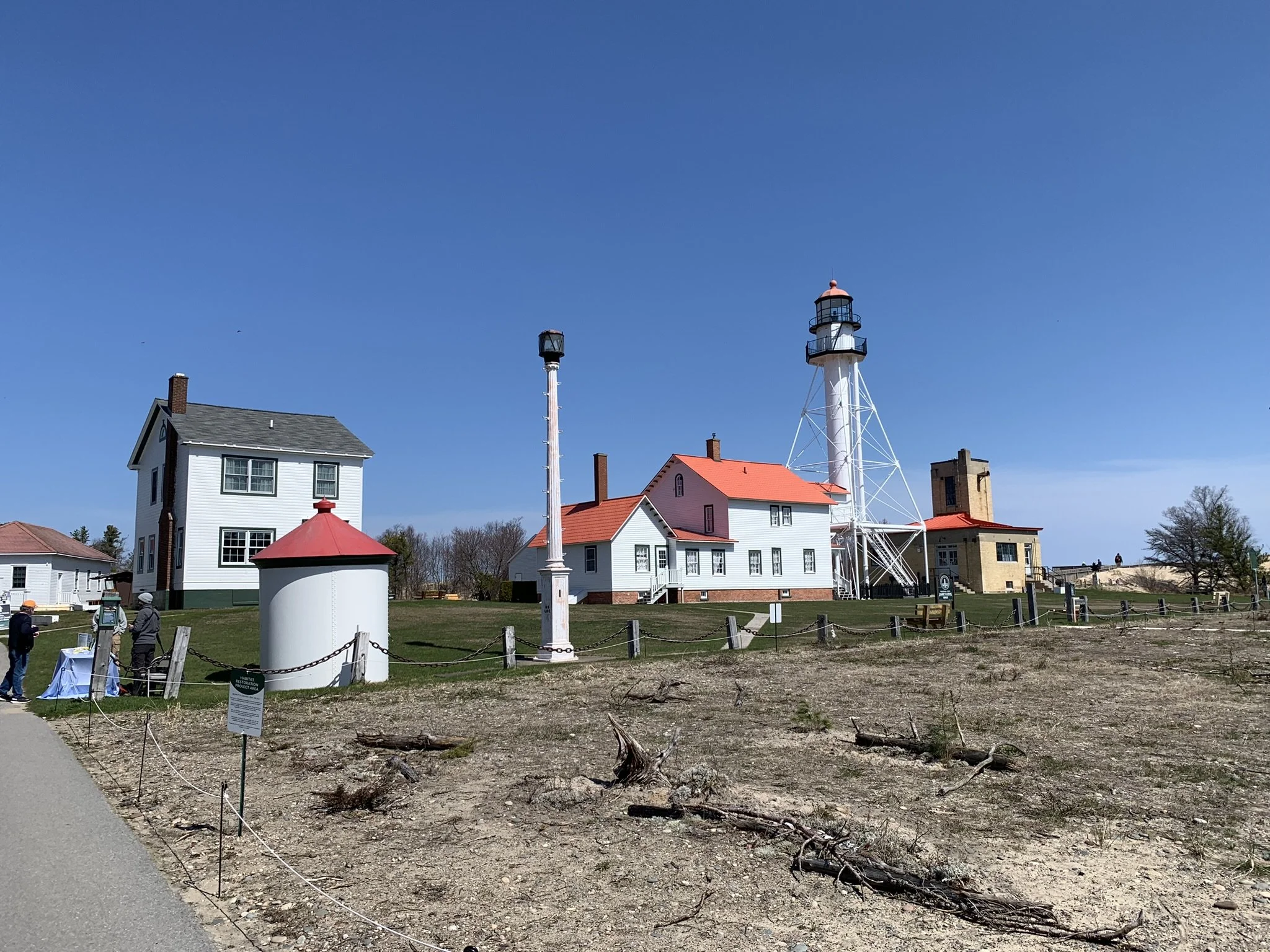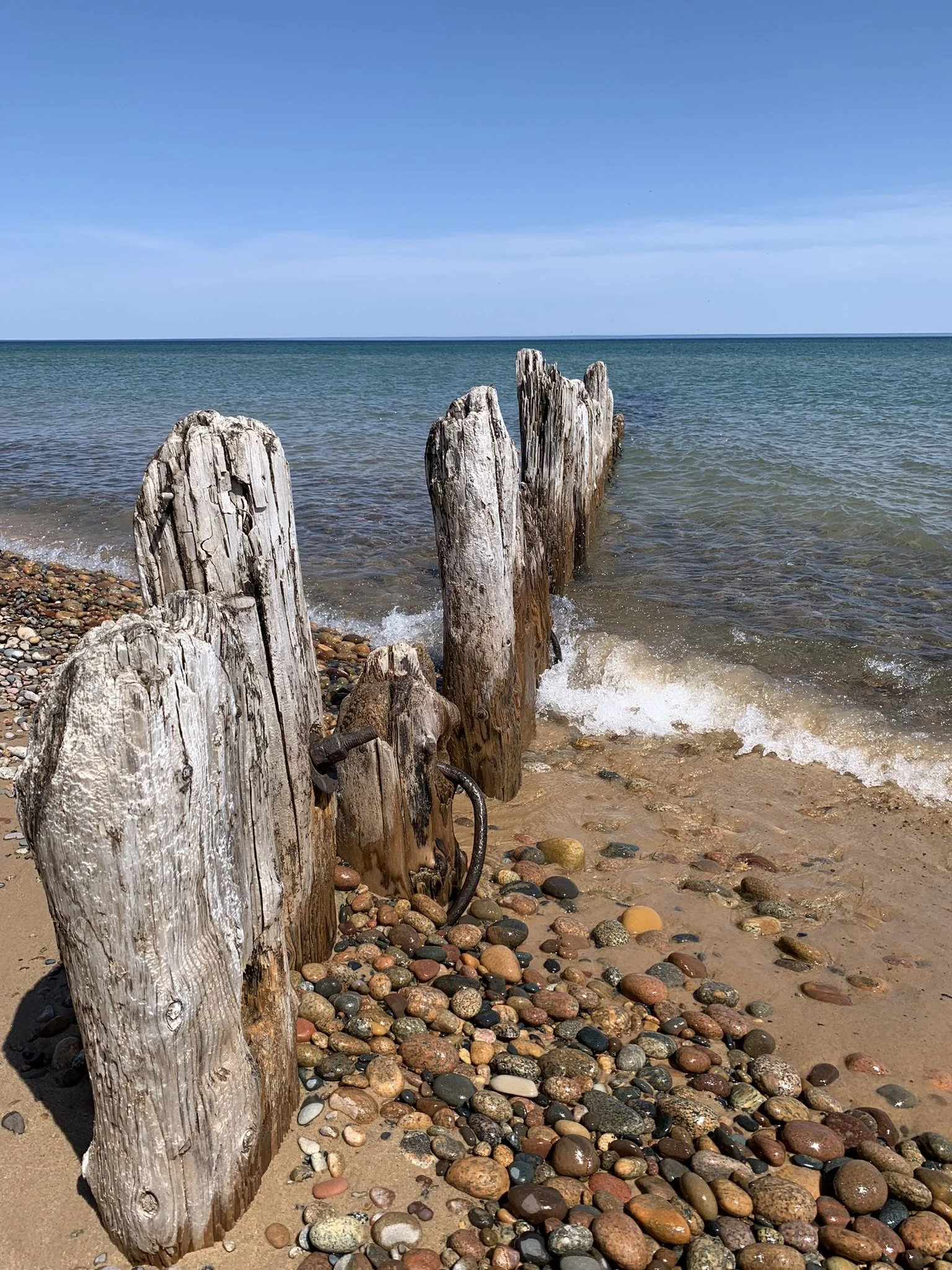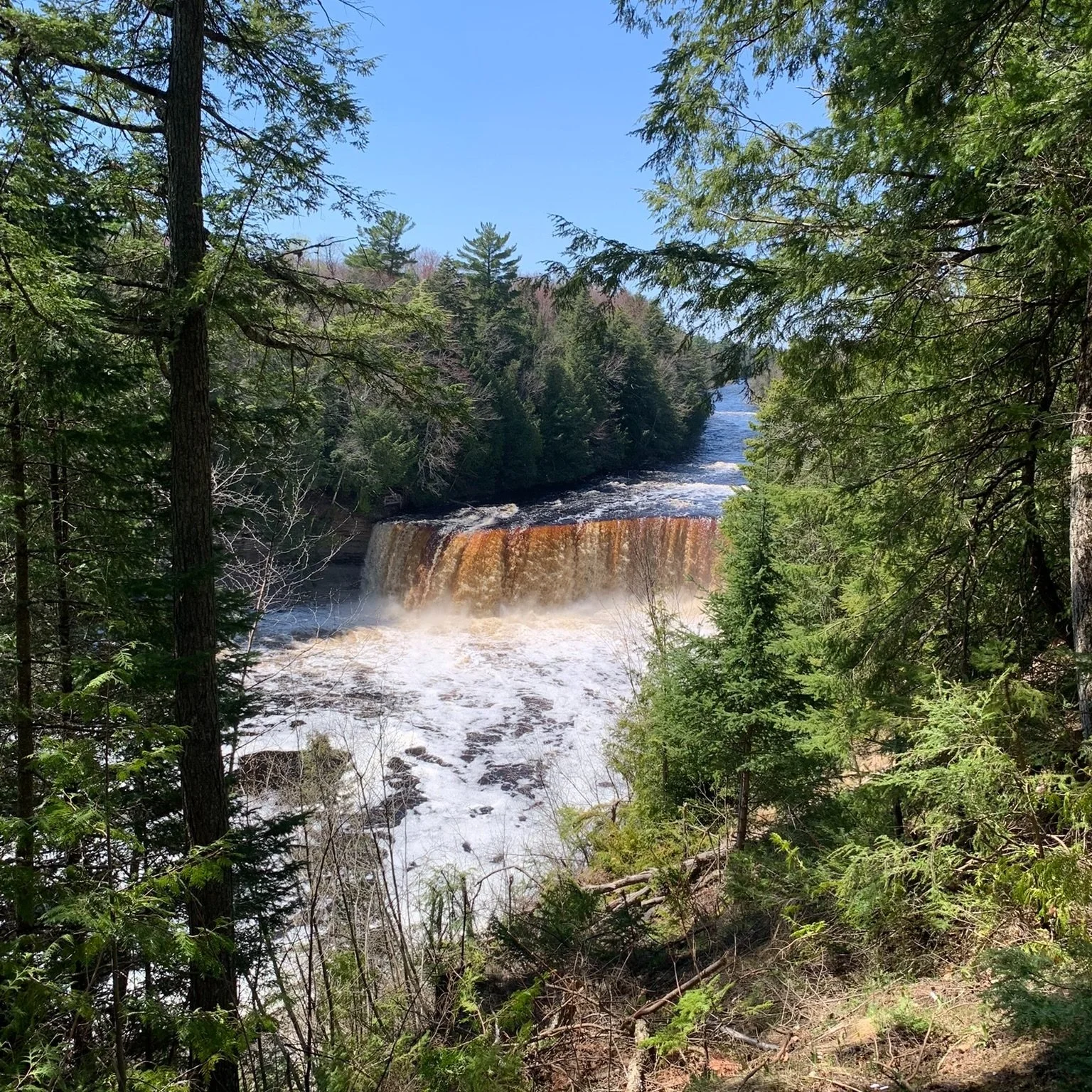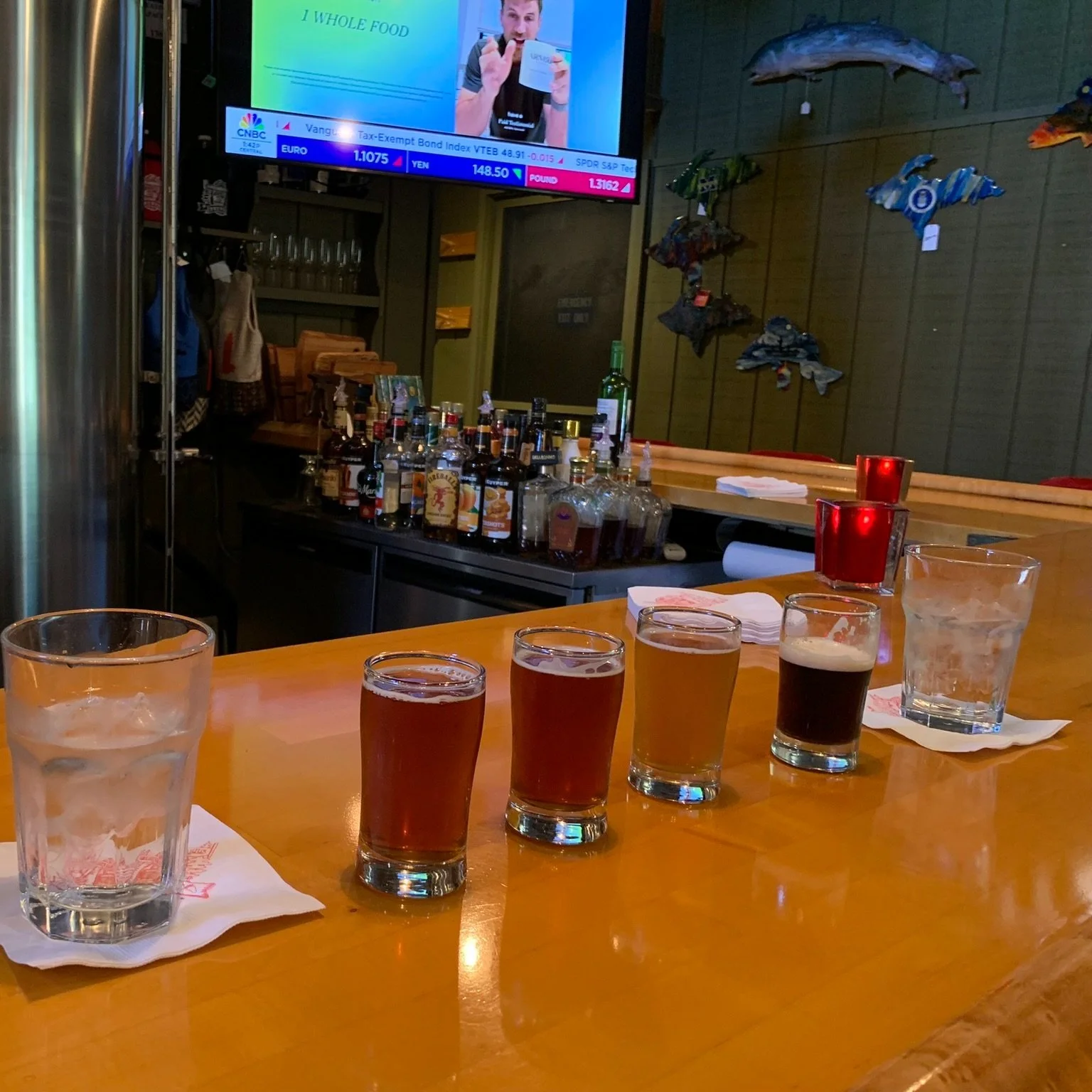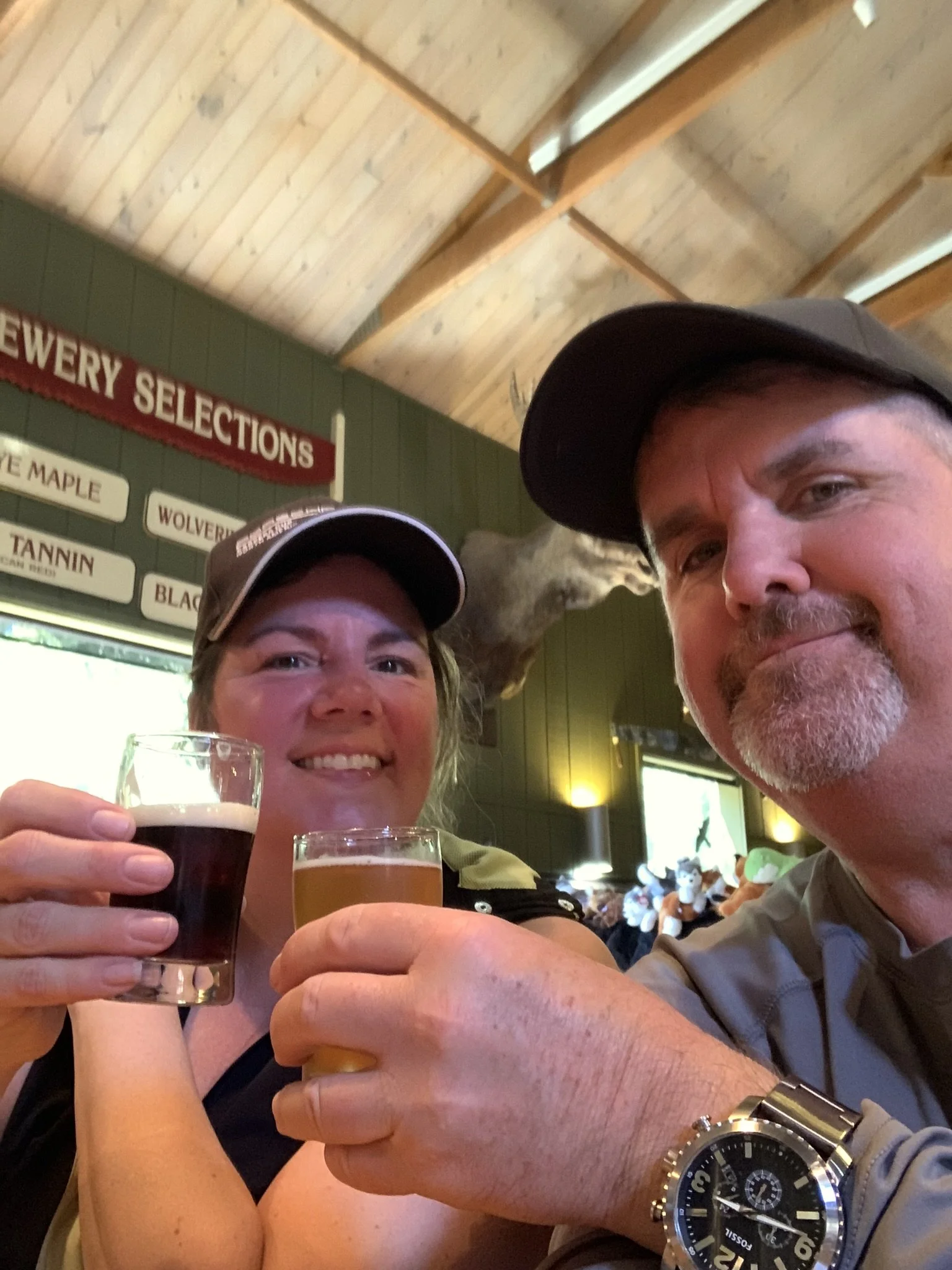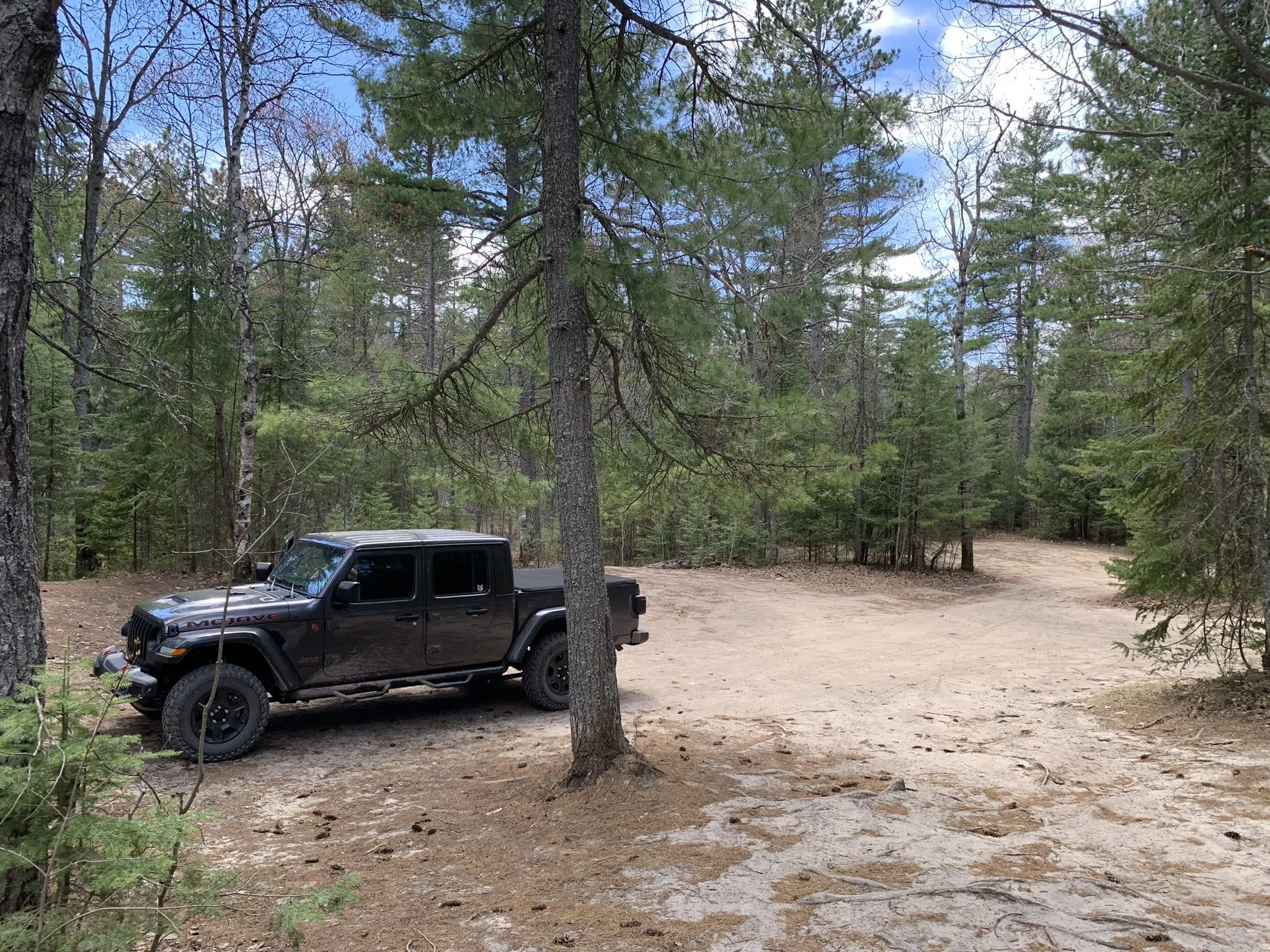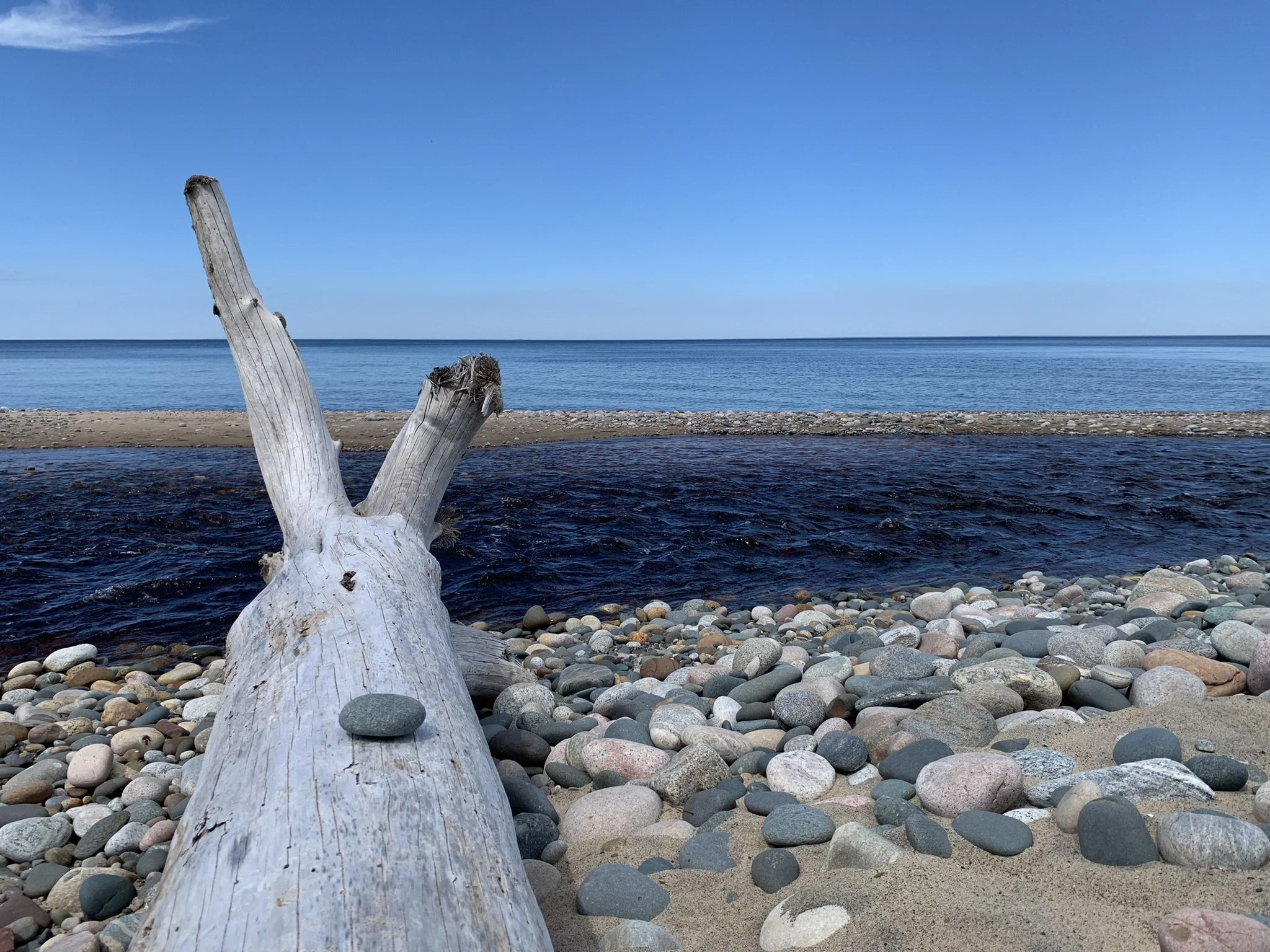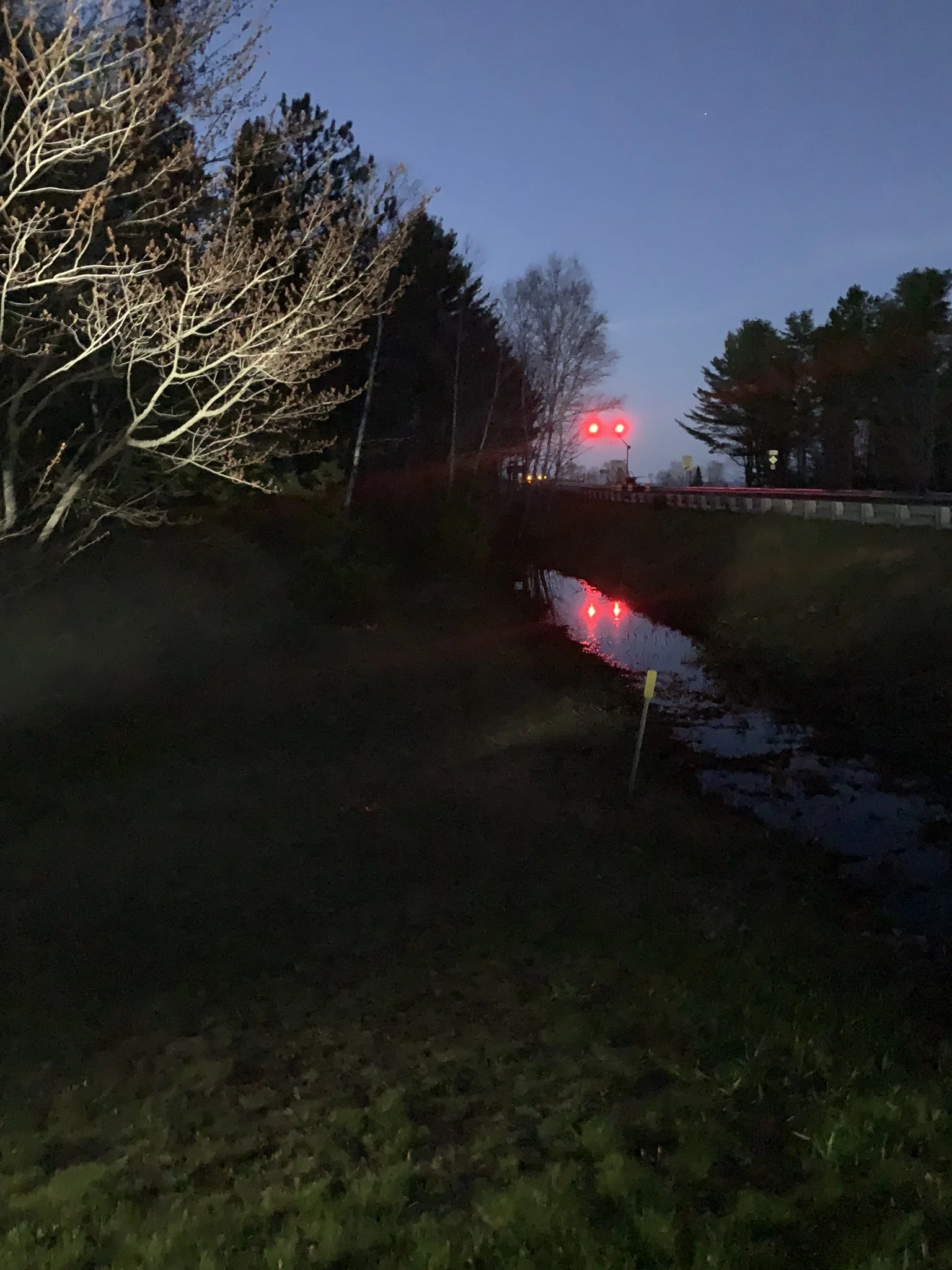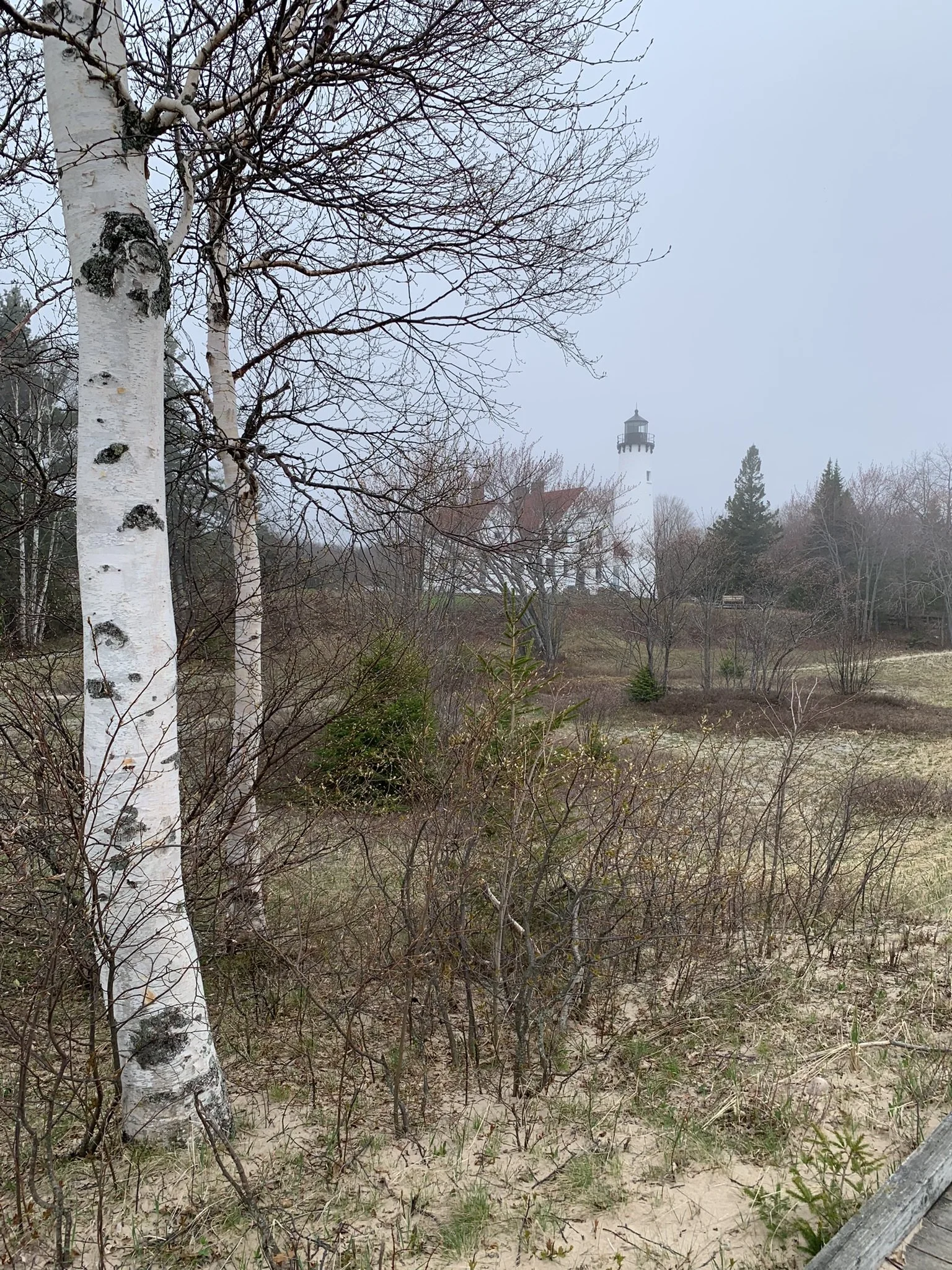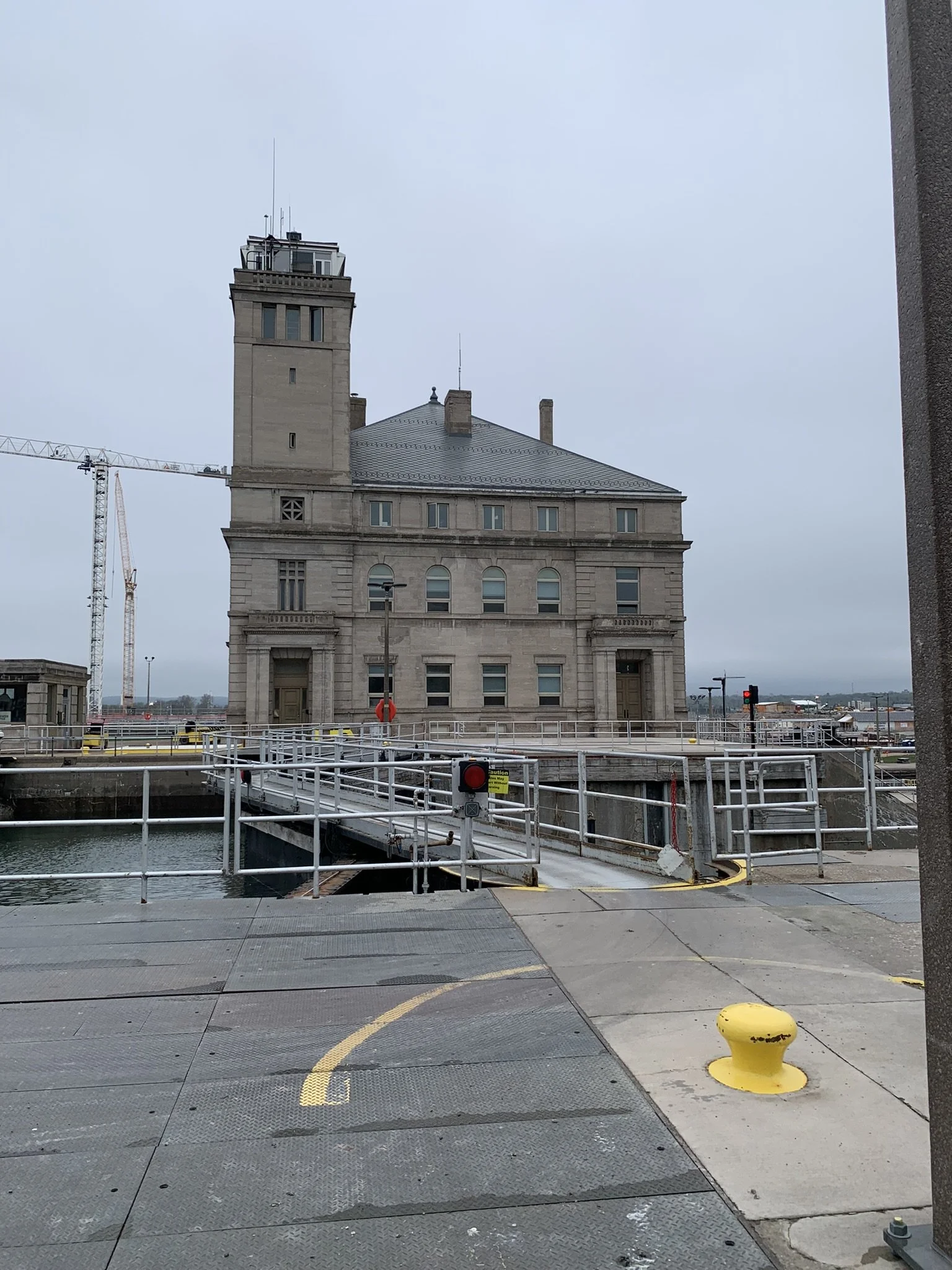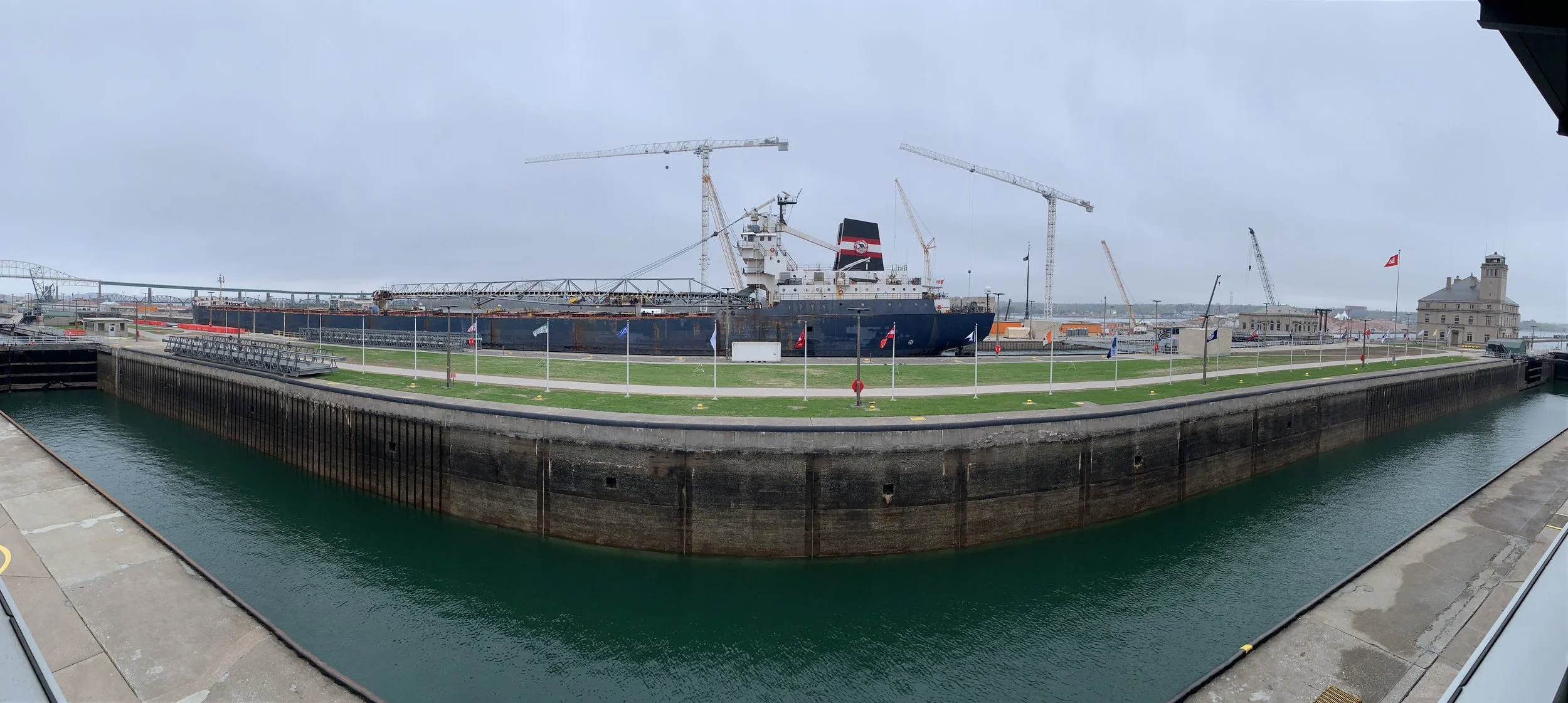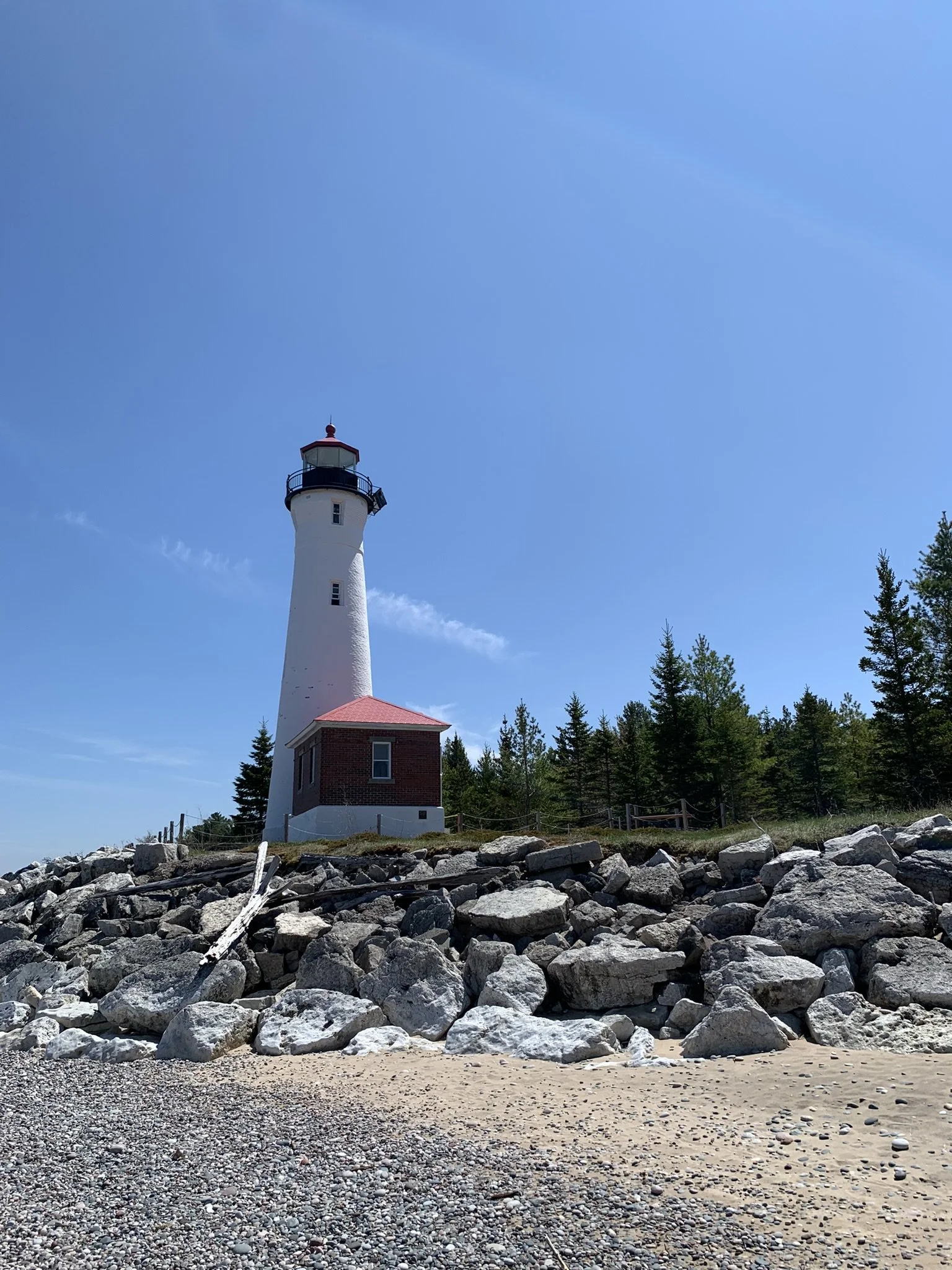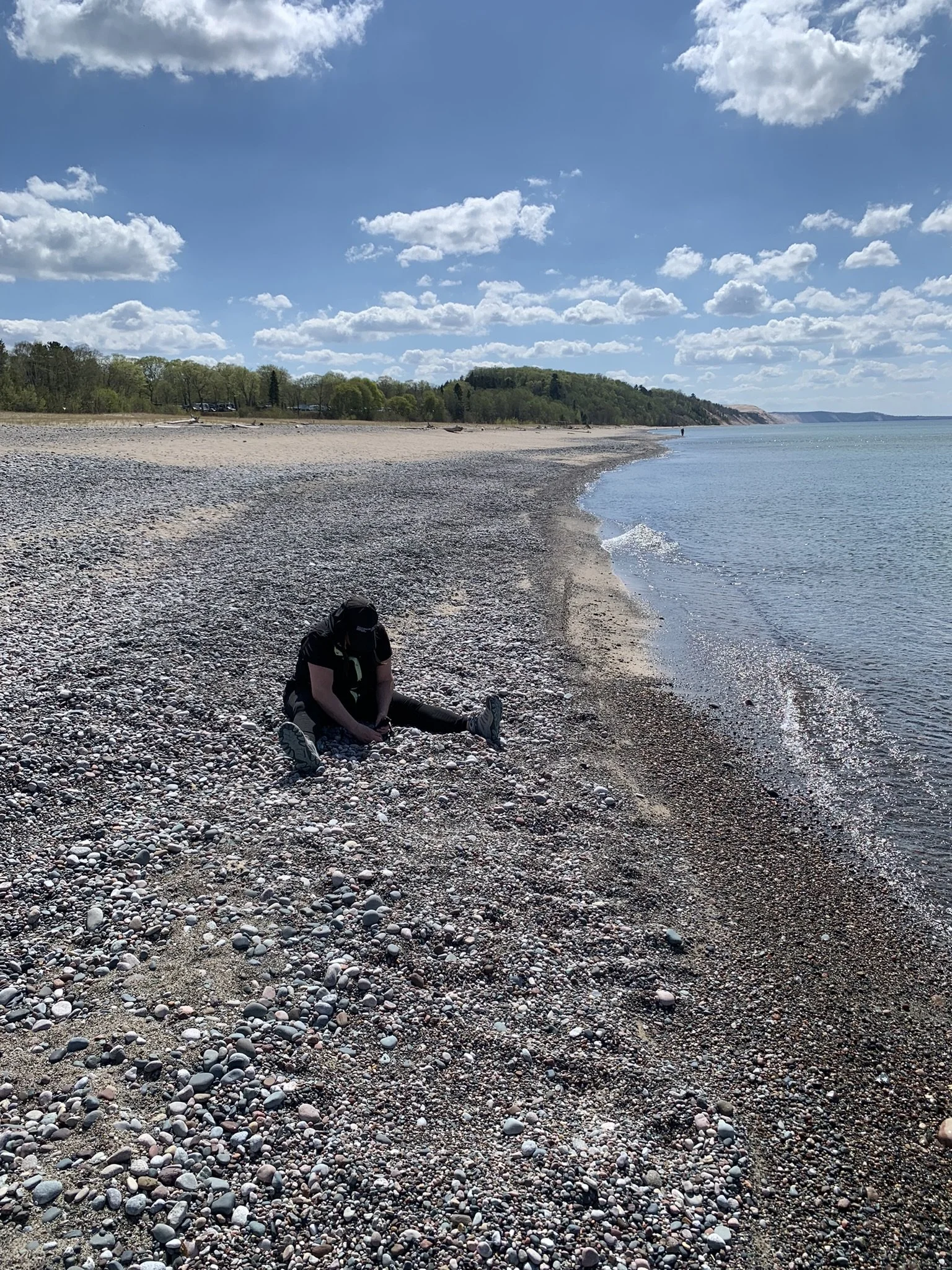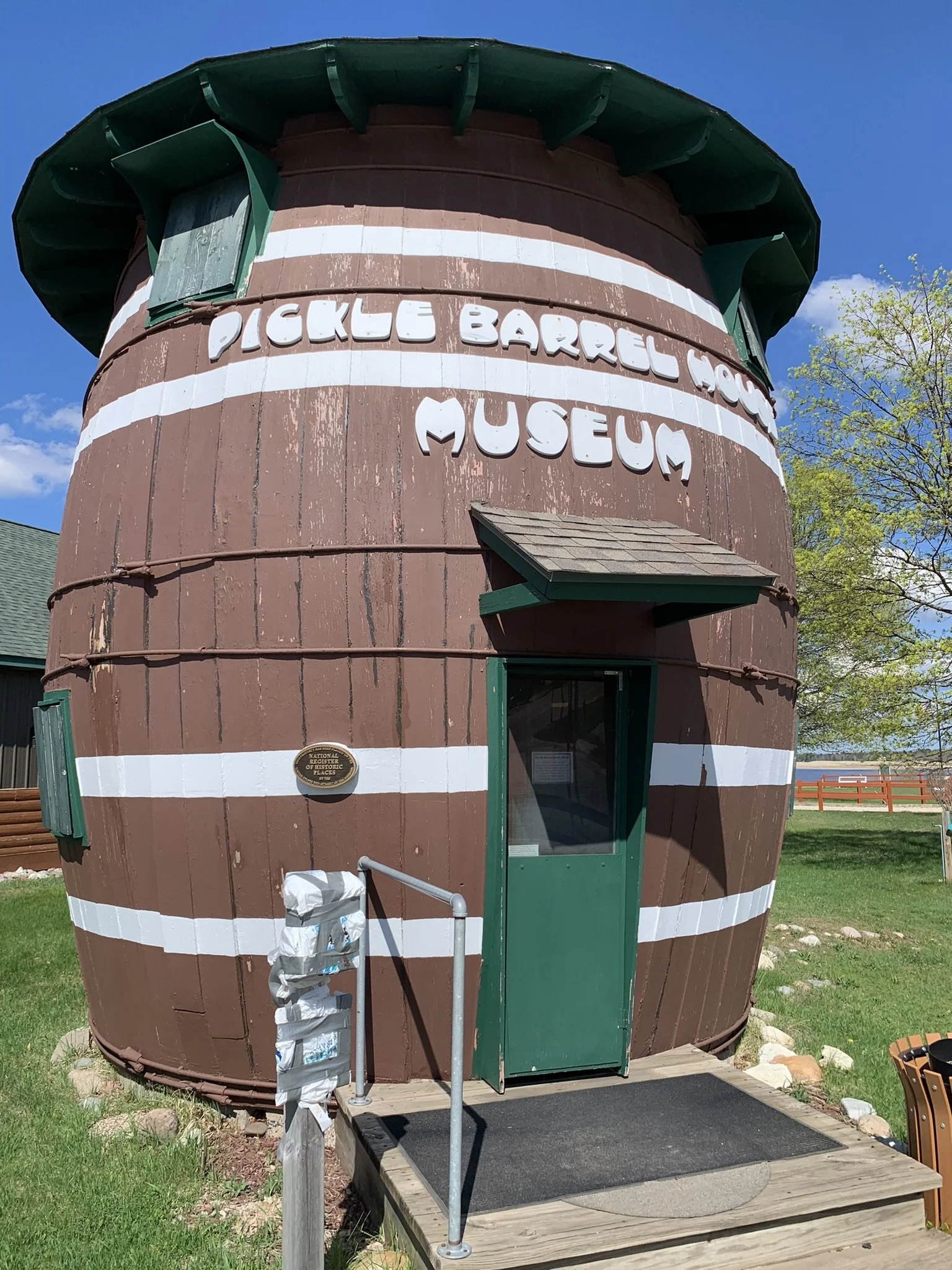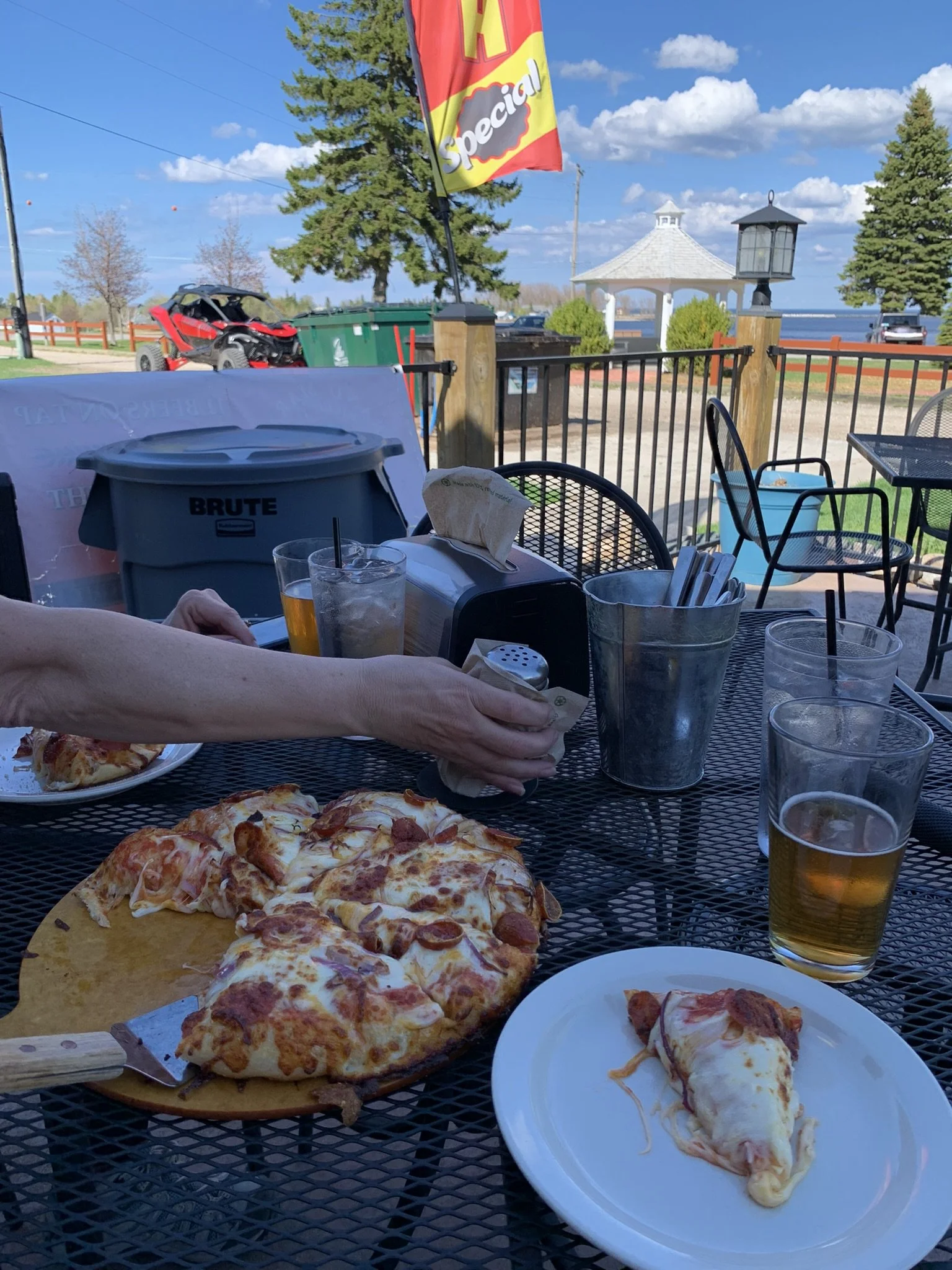Tahquamenon Falls Adventure: A 5-Day Journey Through Michigan’s Upper Peninsula
Day One: Wind, Wood, and a Jeep Named Home
We (Tara and I) rolled into Tahquamenon Falls State Park ready for five days of fresh air, trail dust, and just the right amount of doing absolutely nothing. Our home for the trip? A surprisingly cozy truck bed tent perched in the back of our Jeep Gladiator. Shoutout to Rightline Gear for designing something that makes sleeping in a truck feel more like a cabin and less like a gear haul gone wrong. We had our foam mattress, pillows, and fans ready to roll—basically glamping, if glamping means "let’s not overcomplicate it."
Since we arrived before the official season kicked off (May 16th), check-in was through one of those little office phones on the wall, which, I’ll admit, felt a bit like calling into a secret club. A real person answered, which was a win, and soon enough we were pulling into our site at the Rivermouth Modern Campground.
Setup was a breeze. With the tent up and the sleeping situation sorted, we made a quick run for two campsite essentials: firewood and ice. Firewood came from a local roadside stack with a very honest self-pay system (and maybe a squirrel foreman watching the transactions), and we grabbed ice in nearby Paradise—which felt fitting for the adventure we were about to begin.
The fiery sunset at the Rivermouth Modern Campground is a sight to see.
We had already eaten on the road, so no cooking on night one. Just a couple of beers by the fire and the hum of the river nearby. That wind, though? It had *opinions*. We attempted to hang out by the water, but after a few minutes of being aggressively exfoliated by the breeze, we gave up and retreated back to camp. Early to bed, early to rise—because Day Two was calling, and we had waterfalls to chase.
Day Two: Birds, Beer Flights, and a Moonrise Encore
There’s no better alarm clock than a crisp northern morning and the smell of sausage sizzling on a camp griddle. Thanks to the electric hookup at Rivermouth Modern Campground (and our MVP: the hot plate), we started the day strong with sausage, eggs, and crispy hash browns that could probably win a local diner award. With full bellies and caffeinated optimism, we hit the road toward Whitefish Point.
Whitefish Point, a popular spot for history buffs, rock hounders, and northern lights chasers.
Now, here’s something we didn’t expect: an aerial bird rave. Thousands of birds swirling above us, feasting on clouds of bugs like it was a buffet in the sky. Turns out there’s a bird sanctuary on the grounds, which may explain the feathered frenzy. We skipped the museum buildings (sorry, educational enrichment) and made a beeline for the beach. It was a stunning stretch of sand and smooth stones, littered with driftwood sculptures courtesy of Lake Superior herself.
Witnessing shipwrecks along the shores of Lake Superior can leave you in wonder and awe at the history of this massive lake.
We spent a good chunk of time rock hunting like it was a competitive sport. Some of the rocks came home with us—no signs said we couldn’t, and we promise not to sell them on eBay. Probably.
From there, we headed to the main event: Tahquamenon Falls. We started at the lower falls and made the scenic hike up to the upper ones. Since we were there during the spring melt, the water was gushing with wild, cinematic energy—like nature was flexing just a little. It's one thing to see a waterfall, but it’s another to *feel* the thunder of it rumbling through the trees.
Post-hike reward? A visit to the Tahquamenon Falls Brewery for a flight of beers brewed right at the park. Tasty, cold, and well-earned.
The spring ‘thaw’ is the best time to explore gushing waterfalls in the UP.
Tahquamenon Falls Brewery offers fresh flights.
Dinner back at camp was flame-cooked chicken fajitas, which made the whole site smell like a roadside taquería (in the best possible way). As night fell, we crossed Highway 123 to the nearby boat launch, just in time to watch the moon rise over the lake. No wind, no bugs, no noise—just the two of us, the stillness of Lake Superior, and that big glowing moon sealing off a perfect day.
Day Three: Ice Heists, Beaver Trails, and a Hidden Beach Worth Every Rut
We started Day Three with a grab-and-go breakfast—protein bars and ambition—because we had hiking on the brain and a full to-do list. What we didn’t anticipate? The entire region collectively sleeps in.
Turns out that early mornings in the Upper Peninsula are more of a suggestion than a reality. We needed ice before heading out for the day, so we took a chance on an old-school 76 gas station we’d passed the day before near the falls. It looked like a place that had been serving locals since before GPS existed. Unfortunately, it was still closed when we arrived. Apparently, our 7:00 AM hustle energy wasn’t shared by the locals—and honestly, respect. They’ve clearly got this whole “slow living” thing figured out.
We needed that ice though—it was set to hit an unseasonably warm 80°F, and we had a cooler full of stuff that wasn't interested in becoming soup. The ice bins were unlocked (risky move, rural Michigan), so we left cash inside and grabbed a bag, figuring honesty was the best policy. As we were pulling away, a sleepy-eyed woman emerged from the station and asked, “Did you need ice?” She was so kind, and we explained we had already taken care of it—and the cash was in the bin. She smiled, thanked us, and disappeared inside to collect it. That moment really stuck with us. There’s something special about the trust and casual kindness that still exists in small towns like this.
Back at camp, we iced the cooler, laced up our boots, and hit the Tahqua Trail, which starts right at the mouth of the river. The full loop is around five miles, but we opted for a shorter version. Along the way, we spotted fresh beaver evidence—plenty of gnawed-off trees and muddy tracks—but no actual beaver. We paused for lunch on a log overlooking the river, where sandwiches taste better and time just stretches out a little slower.
A serene view of the pristine waters of Lake Superior.
After the hike, we jumped in the Jeep and made our way to Muskallonge Lake State Park, hoping to catch the overlook. But fate had other plans—it was closed for maintenance. So, in true explorer fashion, we spotted a sandy two-track road and took a detour that turned into a full off-road adventure. Mud, sand, ruts, mystery—we tackled it all, with the Jeep bouncing happily through terrain it was born for.
Eventually, the trail dead-ended into a strange clearing. No signs, no info, just a circle in the woods. Most would turn around. But we? We hiked.
And wow—what a reward. Just a short walk brought us to one of the most pristine and deserted beaches we’ve ever laid eyes on. Lake Superior stretched out before us in perfect calm, and the Blind Sucker River was gently flowing into the lake nearby. It was quiet, wild, untouched. Just us, the rocks, and the sound of waves. We lingered there for a while, rock hunting, snapping pictures, and soaking it in like a secret we accidentally earned.
Night Three: Glowing Rocks and a Lonely Red Light
After the excitement of the trail and our off-road beach discovery, we settled back at camp, but the night wasn’t over. We grabbed our flashlights and walked across the highway once more to the boat launch—not for the view this time, but in search of the mysterious and much-whispered-about Yooperlites. These glowing rocks, made of syenite with fluorescent sodalite, light up under UV light like tiny stars washed ashore. We didn't find a jackpot, but we did find something else.
Midnight in the Upper Peninsula hits different. It’s not just quiet—it feels quiet. The kind where you swear you hear things that aren't there. Footsteps? Leaves rustling? Maybe it's just your own heartbeat echoing in a place so still that it amplifies everything.
While walking along the boat launch path, I found myself staring at something totally unexpected: the temporary red light stationed at the bridge over the river. Highway 123 had been under construction all week, with a one-lane setup managed by a solar-powered traffic signal. During the day, I barely noticed it. It was just another piece of the background—functional, boring, slightly annoying.
But at night? That red light took on a whole new character.
It blinked rhythmically, dutifully managing invisible traffic while we wandered barefoot along the shore, chasing glowing rocks and moonlight. In that moment, it wasn’t just a machine. It felt like a sentinel. A quiet guardian on duty while everyone else slept. Unmoving. Alone. Tireless.
I stopped and took a photo of it. Tara asked me why. And I didn’t have a clear answer, just a feeling: This light was the only other “being” awake with us. It had been working nonstop all day and night, unnoticed and unthanked, guarding the flow of cars that may or may not come. Something about that stirred me. Maybe it’s silly. Or maybe it’s proof that sometimes, the smallest things catch your heart when your mind is still.
And with that, we walked back to camp under a sky so clear it felt painted. We didn’t find a Yooperlite that night—but I did leave with a strange, quiet admiration for a blinking red light.
Day Four: Fog, Freighters, and Food That Needed No Sauce
Day Four greeted us with a heavy morning fog—the kind that swallows the trees and makes the world feel like it’s still waking up. We had originally planned to start the day at Naomikong Overlook, but with visibility reduced to about one tree ahead, we made a game-time decision to skip it and head straight to Point Iroquois Lighthouse instead.
The fog turned out to be the perfect atmosphere for the lighthouse stop. We wandered through the historical displays, soaking in stories of shipwrecks, storms, and the critical role this place played in guiding vessels safely through Lake Superior’s wild moods. What hit us most, though, was the deeper significance of the site to the local Indigenous communities. This wasn’t just a pretty white tower on the edge of the lake—it was land layered with meaning, culture, and memory.
A foggy morning at Point Iroquois Lighthouse makes for a dramatic scene.
After that reflective moment, we turned our sights to something big and industrial: the Soo Locks. And we timed it perfectly. A massive iron ore freighter was just entering as we arrived. Empty, flying a Canadian flag, likely headed back north to reload after dropping off its haul near Detroit. We grabbed our sandwiches and claimed a seat in the viewing area to watch the whole process.
For 45 minutes, we sat there—just watching a boat slowly rise. Doesn’t sound thrilling on paper, but there’s something mesmerizing about it. The engineering, the scale, the sheer patience of it all. And when that big ship finally floated up to our level and glided on toward who-knows-where, we both felt oddly satisfied.
No trip to the Soo is complete without watching the barges in the canal.
Next up: the practical side of road tripping—laundry stop in Sault Ste. Marie. Once we rejoined the civilized world with clean clothes, we made a last-minute decision to grab dinner somewhere local, off the tourist path. So we crossed over into the Bay Mills Reservation and found a waterfront spot called Pickles. No, we didn’t order pickles.
Inside, we were greeted by a bartender who could moonlight as a food critic. We asked for recommendations, and without hesitation, she pointed us to the prime rib sandwich with house-cut fries. She offered steak sauce but added, “Frankly, it doesn’t need it.” Bold claim.
We trusted her. We were not disappointed.
That sandwich was everything she promised—tender, juicy, flavorful. The fries were crispy perfection. No sauce required, and none missed. It was the kind of local gem you can’t plan—you just stumble into it and feel lucky afterward.
Full and happy, we rolled back to camp, lit one last fire, and turned in early. After three jam-packed days, plus some emotionally charged late-night red light monologues, we were feeling it. Sometimes the best way to honor a trip is to let your body rest and your memories simmer.
Day Five: Washed Out Roads, Beach Picnics, and Pizza Worth the Bumps
By Day Five, we had the routine down: scavenge for ice, cook up a hearty campfire breakfast, and do a little backcountry recon—via Facebook, of course. We were trying to figure out whether Crisp Point Road was passable or if it was still in its annual post-thaw, tire-swallowing state. Rumor had it the road had been repaired after a recent washout, but no one was posting any solid updates. Naturally, we took our chances.
The road? Passable. Not great, not terrible. If you have a Jeep or at least something with decent clearance, you’re golden. If you’re in a Honda Civic, maybe turn around and go get a milkshake instead. The drive was beautiful, though—dense woods, shifting light, and that quiet tension of wondering if the next bend in the road will contain a surprise crater.
Crisp Point Lighthouse, a sight to see for all adventurers.
When we arrived at Crisp Point Lighthouse, the place was bustling with volunteers shoveling sand, tuning things up, and getting ready for opening weekend (which we were just missing). Honestly, we didn’t mind. We weren’t there for a tour—we were there for the vibe: the drive, the beach, more rock hunting, and a packed sandwich on the sand. And that’s exactly what we got.
After Crisp Point, we decided to roll the dice again and took Country Road 412 back—another scenic gamble. From there, we found County Road 414, because we apparently can’t resist a questionable backroad. It was mostly fine... mostly. We slowed down for some serious potholes, questioned our life choices once or twice, but in the end made it safely to Grand Marais.
No trip to the rocker shores of Lake Superior is complete without a little rock hounding!
This little town felt like a well-earned reward. We strolled the beach (yes, more rocks were hunted), took in the view, and cruised through the quaint main street filled with shops we didn’t quite have the energy to enter. But we did stop at the local tavern for what turned out to be a fantastic pizza—thick crust, gooey cheese, the works. Naturally, we paired it with a glass of Keweenaw Brewing Company’s Red Ridge —that blood orange ale had basically become a theme by this point.
Pickle Barrel House Museum in Grand Marais is a unique 2-story cabin inspired by a story book.
Grand Marais Tavern offers comfort fare, delicious craft brews, and friendly staff.
Oh, and we stumbled onto the Pickle Barrel Museum—closed, unfortunately, but a fun discovery nonetheless. (My daughter had told me about it, so I felt like I was in the know.)
Back at camp, the sky was turning, and radar promised a storm. We did what anyone camping in a truck bed tent would do: added more ratchet straps and crossed our fingers. Off the ground? Yes. Tornado-proof? Not even slightly. But we tucked in that night with full bellies, sore legs, and a quiet sense that this had been exactly the kind of trip we needed.
Wrapping Up: Reflections From the Road
We made it through the night—no storm damage, no soggy sleeping bags, and not a single ratchet strap gave out. The truck bed tent held strong, and by morning, we were packing up for the long drive home, a little tired but completely fulfilled.
Looking back, it’s hard to believe how much we fit into five days: waterfalls roaring with spring melt, beaches littered with driftwood and mystery rocks, hidden trails that led to places we’ll never forget, and a prime rib sandwich that might haunt my dreams (in a good way). We crossed paths with lighthouses, freighters, birds, and that one stoic traffic light—quietly working the night shift like some unsung guardian of the road. Somehow, that light still lingers in my mind. Maybe it was the silence. Maybe it was the stillness. Or maybe it reminded me that even the unnoticed things can be quietly beautiful.
I hope you’ve enjoyed reading about our little Upper Peninsula adventure as much as I’ve loved telling it. And hey—if Searra’s reading this—thanks for letting me crash the blog party. Here’s hoping I get invited back for another round of storytelling soon.
About the Author
Dwayne Johnson is a trail-loving traveler, Jeep adventurer, and lifelong music producer based in the Detroit area. A journeyman pipefitter by trade and a Henry Ford College grad, Dwayne is no stranger to hard work—or planning the perfect backroad escape. He typically explores Michigan and beyond with his wife Tara, always on the lookout for scenic overlooks, hidden trails, and great campfire meals.
Though this is his first blog post (thanks to a little nudging from his daughter, Searra), storytelling isn’t new to him—he’s been writing music and lyrics most of his life. These days, you’ll find him producing deep house tracks, DJing his own mixes, and dreaming of spinning beats in exotic places—camera rolling, of course. You can find his music on any streaming platform or YouTube.


